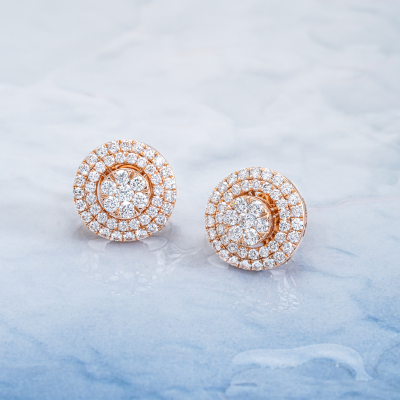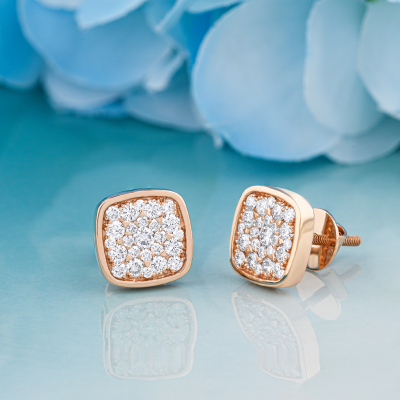Real Garnet vs. Fake: How To Tell The Difference Between The Two
Those born in January are lucky to have a rainbow of colors and diverse garnets as their birthstone. They commonly come in red color, but they are also found in an extraordinary range of beautiful colors such as orange, yellow, purple, and vibrant green. Shocking to hear, but certain garnets change color from blue to purple in different lighting.
The name garnet is derived from the medieval Latin word granatus meaning pomegranate, in reference to the similarity of the color red. This beautiful stone is quite popular among jewelry enthusiasts. In Greek mythology, the garnet is a gift of love and is deeply associated with eternity. They symbolize friendship, trust, and companionship because they are said to be associated with faith, love, and constancy.
Different Types Of Garnets Available
To be precise, all real garnets have essentially the same crystal structure but vary in chemical composition. There are many garnet categories, out of which only 5 are commercially important as gemstones. Let us discover them briefly to have a better understanding.
- Pyrope – It is very well known for its red hues, even though they can be discovered in a wide range of colors, from pastels to even purple.
- Almandine – Another well-known red garnet, almandine is supposed to be darker and often opaque. A popular mixture of almandine and pyrope is rhodolite garnet, rich in a purplish red hue.
- Grossular – Popularly known by people under one trade name called Tsavorite. This garnet is a gorgeous rich green variety of grossular. Moreover, grossular can be found in various hues ranging from very colorless gems to yellows, oranges, browns, and desirable greens.
- Andradite – Demantoid gem is best known andradite garnet. The name demantoid refers to diamond-like because andradite garnets have high dispersion, just like diamonds.
- Spessartine – In general, spessartine garnets are orange to red in color. Their high brilliance and intense orange hues have made them very popular, as only a few other gemstones exhibit this color.
Read More: 5 Best Gemstones For Engagement Rings
How To Tell If A Garnet Is Real?
The highly desirable colors of garnet make it a very attractive gemstone, among others. The most important question when buying a garnet is – How do I know if a garnet is real? So, there are many ways to determine the authenticity of a real garnet and figure out the difference between the real and fake one.
- Garnets are well known for their dense and saturated colors, and the presence of inclusions such as a horsetail inclusion in demantoid garnet can help you identify the real garnet stone. Therefore, looking at the intensity of color, if that is lighter, brighter, or more colorful, will evaluate whether a garnet is fake or not. So, always take a look at the color richness of a garnet.
- The stone’s brilliance is one of its main USPs and contributes to its growing demand worldwide. So, how to identify real garnet through its reflection? Carry out the following steps to distinguish the real garnet from the fake one.
- Place the stone close to your eyes.
- Using a lamp as an example, try to look through the stone at a distant light source. A reflection of light should be visible off the stone’s inner walls.
- Turn the stone on its axis again and look through it as before. A rainbow pattern would be visible here as a result of the reflection.
If you cannot observe the reflection in your garnet, the stone is probably an imitation.
Also, know about the Incredible Benefits of Aquamarine Stone
- The clarity of this gemstone totally depends on its variations. Usually, red garnets are eye-clean except for the almandine garnet with asbestos fiber inclusions that produce a star-like effect. Apart from that, orange garnets are known for having many inclusions. So always ensure this in mind when buying garnet; if the red variety has too many inclusions or the orange has very few impurities, the gemstone might be fake.
- It is possible to detect artificial garnets if they melt or fade when dipped in boiling water because the real ones would not fade away.
- Focus on the cut of the stone in-depth because most of the cuts done in garnets are round, princess, and emerald. As a garnet is too thick, other cuts apart from the ones mentioned here would not be suitable with a splendid cut.
- The genuine garnet colors are supersaturated, and they can even reach up to burgundy, brown, and black.
- The natural garnet gemstone is harder than a piece of glass, plastic, and a knife and can make scratches on steel.
- Real garnets do not have any birefringence, meaning double-refraction. Therefore, if such a thing is observed, you may note that the stone is fake.
- The optical properties of real garnets are isotropic. You may ask your gemologist to check the garnet with a polariscope. The garnet should always be dark under a polariscope, ensuring that the stone is real.










